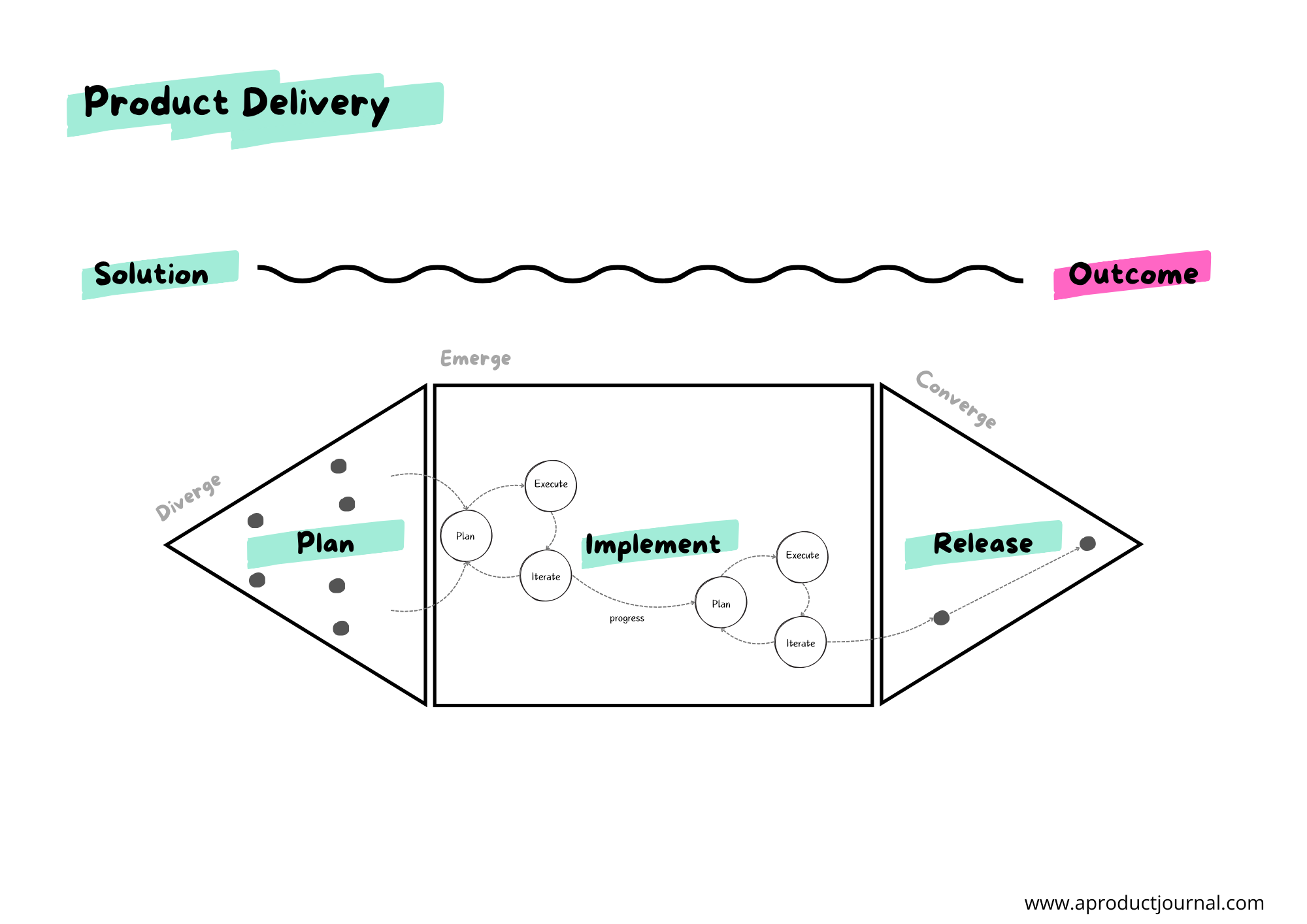🚀 Product Delivery
Deliver it the right way

By Tolgay B.
✏️ Description
The Delivery Phase transforms validated solutions into fully (or partially) developed features that are successfully launched. This phase requires coordination among cross-functional teams, effective management of timelines, and clear communication with all stakeholders. It focuses on seamless execution to ensure smooth product releases and well-planned rollouts. The ultimate goal is to deliver a high-quality product that meets user needs and business objectives, and minimizes disruptions.

◀ Plan (Diverge): In the Plan phase, the focus is on laying the groundwork for successful implementation. Key activities include defining the scope, allocating resources, scheduling, conducting preliminary risk assessments, selecting technologies, designing the architecture, and so on. This phase is crucial for kickstarting the development process and ensuring that subsequent iterations are built on a solid, well-thought-out foundation.
◼️ Implement (Emerge): The Implementation phase is where the actual development and execution happen. During this phase, cross-functional teams collaborate closely to develop the solutions that have been validated in earlier phases. This involves detailed engineering, coding, testing, and iterating based on feedback.
▶ Release (Converge): The Release phase narrows down to finalizing the solution and launching it. This includes final testing, quality assurance, and preparing communication materials. The release phase is critical for ensuring that the product is polished, meets all specifications, and goes from internal use to public use. Activities focus on detailed coordination for a smooth rollout, including training for support teams, finalizing release notes, and executing a launch plan that effectively introduces the product to the market and stakeholders.
+ Benefits
Efficient execution: Mastering the Delivery Phase ensures smooth and efficient execution of product releases. With clear plan, teams can stay on track, manage timelines, and avoid bottlenecks. This leads to timely launches, reducing delays and maximizing the value delivered to users.
High quality: Effective management of the Delivery Phase ensures the product reaches users in its optimal form. Strategic rollout planning, rigorous testing, and comprehensive quality assurance minimize post-launch bugs and performance issues.
Improved communication: Clear and continuous communication throughout the Delivery Phase builds trust with stakeholders and users. Keeping everyone informed about timelines, updates, and potential challenges ensures alignment and sets the stage for a successful product launch. This fosters confidence in the product and encourages stronger user adoption.
⚠️ Common Pitfalls
Lack of coordincation: Lack of coordination between cross-functional teams can lead to confusion, delays, or missed deadlines. If teams aren’t aligned on priorities, responsibilities, and timelines, the delivery process can quickly become inefficient and fragmented.
Insufficient quality control: Rushing through the Delivery Phase without thorough testing can result in launching a product that’s riddled with bugs or performance issues. Skipping proper quality assurance and usability testing increases the risk of releasing a product that doesn’t meet user expectations or fails to function as intended.
Inadequate coomunication: Failing to keep stakeholders and users updated on progress, delays, or changes during delivery can cause frustration and misaligned expectations. When communication breaks down, it can lead to confusion and undermine confidence in the product, potentially impacting adoption and long-term success.
🧰 Delivery Toolbox
⍺ Alpha Testing
Alpha testing assesses product using internal feedback to ensure readiness for broader testing phases.
β Beta Testing
Engage real users to validate your product through critical feedback and market readiness.
More to come soon
- Percentage Launch
- Holdback
- Release Notes
- And so on…
COMING SOON
📚 More Resources
COMING SOON